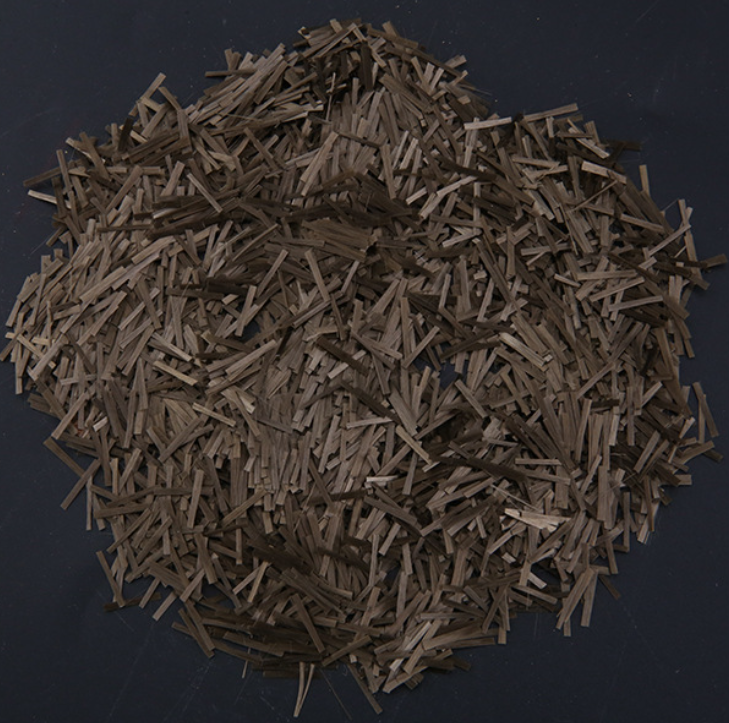Environmental characteristics of basalt fiber: A revolutionary breakthrough in green materials
Jul 02,2025

Basalt fiber is an inorganic fiber material made from natural basalt as raw material, which is melted at a high temperature of 1450-1500℃ and then drawn into high-speed fibers through a platinum-rhodium alloy die. Its main components include silicon dioxide (SiO₂, 45-60%), alumina (Al₂O₃, 12-18%), iron oxide (FeO+Fe₂O₃, 5-15%), etc., which are highly consistent with the composition of the earth's crust, making it a truly "nature-derived" material.
Compared with traditional materials, the production process of basalt fiber demonstrates significant environmental advantages:
Zero raw material processing: Basalt ore does not require chemical purification; after crushing, it can be directly melted, avoiding pollution from acid washing and alkali treatment.
Low-energy consumption process: Production energy consumption is only 30% of that of glass fiber, and carbon emissions are 80% lower than those of carbon fiber.
Zero waste: Production waste can be 100% recycled and re-melted, with no solid waste discharge.
Non-toxic: It does not contain harmful elements such as boron and fluorine, and does not release VOCs (volatile organic compounds) during production.
Biocompatibility: The fiber surface is compatible with microbial communities and can be used in ecological restoration projects.
Water resource protection: Water consumption is 40% less than that of glass fiber, and it can be recycled.
Characteristics of Basalt Fiber
Mechanical Properties
Tensile strength: 3000-4800 MPa (superior to ordinary steel)
Elastic modulus: 89-110 GPa
Density: 2.6-2.8 g/cm³ (3 times lighter than steel)
Environmental Tolerance
Temperature resistance: Stable operation from -260℃ to 800℃, no toxic gases are released during fire.
Corrosion resistance: In acidic and alkaline environments with pH 2-12, the annual strength loss rate is <3%.
Radiation resistance.
Application Fields of Basalt Fiber
Construction Engineering: The backbone of low-carbon cities
Concrete reinforcement: Replacing steel bars, solving rust problems, and extending the service life of buildings.
Seismic structure: Fiber mesh reinforcement of historical buildings, with a cost reduction of 40% compared to carbon fiber solutions.
Green building materials: Composite with bamboo to produce fireproof and heat-insulating boards, with a thermal conductivity as low as 0.032 W/(m·K).
Transportation Field: A revolution in lightweighting
New energy vehicles: Battery pack protective shells are 30% lighter, increasing the range by 5-8%.
Rail transit: Fiber-reinforced brake pads, extending the service life by 2 times and reducing brake dust pollution.
Shipbuilding: Marine corrosion-resistant composite materials for ship hulls, reducing maintenance frequency.
Environmental Engineering: A powerful tool for ecological restoration
Pollution control: Heavy metal adsorption filter membranes, with an adsorption rate of 99.7% for lead and cadmium.
Soil reinforcement: Fiber geotextiles prevent desertification and promote vegetation restoration.
Marine protection: Artificial reef substrates, supporting the attachment and growth of coral larvae.
Energy Field: A booster for clean technology
Wind turbine blades: 15% lighter than glass fiber blades, improving power generation efficiency.
Hydrogen energy storage and transportation: Reinforcement layer for Type IV hydrogen storage tanks, with a burst pressure exceeding 87.5 MPa.
Photovoltaic brackets: Weather resistance is 5 times higher than that of aluminum alloy, suitable for salt-alkali land power stations.
PREVIOUS:
Related Posts
Contact Us
E-mail:
gdkaidun@163.com
Phone/WeChat:
86-131-3828-6677
Address:
Room 401, Building 21, No. 1, Keqing Road, Yundonghai Street, Sanshui District, Foshan City, Guangdong Province





